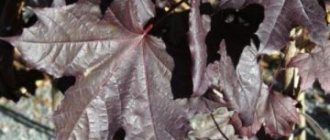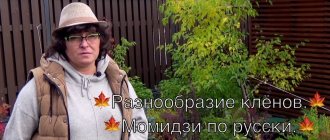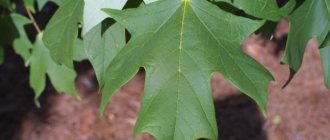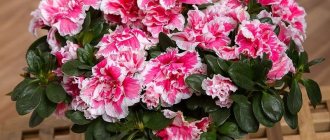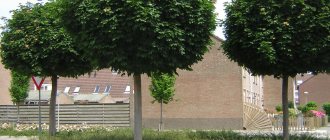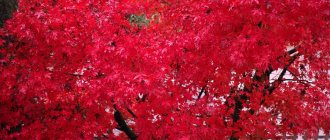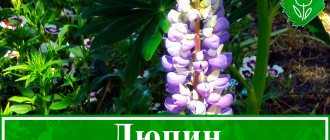The wood species commonly known as boxelder maple.
"Senior Box" redirects here. For information on the elder box bug, see Boisea trivittata
. For other uses, see Box Elder (disambiguation).
| Acer negundo | |
| Save Status | |
| Least Concern (IUCN 3.1) [1] | |
| Scientific classification | |
| Kingdom: | Plantae |
| Clade : | Tracheophytes |
| Clade : | Angiosperms |
| Clade : | Eudicots |
| Clade : | Rosida |
| Order: | Sapindales |
| Family: | Sapindaceae |
| Genus: | Acer |
| Chapter: | Acer sect. Negundo |
| Variety: | A. negundo |
| Binomial name | |
| Acer negundo | |
| Native range Acer negundo | |
| Synonyms [2] | |
List
| |
Ash-Leaf Maple
The
ashleaf maple
,
boxelder maple
,
Manitoba maple
or
ashleaf maple
, is a species of maple native to North America. It is a fast-growing, short-lived tree with opposite compound leaves. It is sometimes considered a weed or invasive species, and has been introduced and naturalized in many countries around the world, including South America, Australia, New Zealand, South Africa, much of Europe, and parts of Asia. [3] [4]
Common names[edit]
Indicating that it is familiar to many people over a large geographic range, A. negundo
has many common names. The names "box elder" and "box maple" are based on the resemblance of its whitish wood to that of boxwood and the similarity of its pinnately compound leaves to those of some species of elder. [5]
Other common names are based on this maple's resemblance to ash, its preferred environment, its sugary sap, description of its leaves, its binomial name, and so on. These names include "Manitoba maple", "ash maple", "cut-leaf maple", "three-leaf maple", "ash maple", "sugar maple", "negundo maple" and "river maple". [6]
Names vary depending on the region. Box elder, box maple, ash maple, and maple ash are some of its common names in the United States. In Canada it is commonly known as Manitoba maple and sometimes as elfin maple. [7] In the British Isles it is known as box maple [8] or ash maple. [9] In Russia it is known as American maple (Russian: american maple, tr. amerikansky klyon), as well as maple leaf ash (Russian: ash-leaf maple, tr. klyon yasenelistny).
Garden and ornamental varieties
The decorative variety, ash maple “Flamingo,” has gained enormous popularity among gardeners and owners of summer cottages. You can guess the reason from the name: its white and pink young leaves look very elegant.
“Flamingos” with variegated white-yellow foliage are also relevant in the garden, since these small trees have very neat and compact crowns that do not require shaping.
There are decorative “Americans” with soft pink leaves or green leaves with a touch of pink. By autumn it’s hard to take your eyes off them – the foliage turns bright pink or dark pink with green “bonfire” stripes. Beauty is maintained by trimming the crown every spring. The tree looks very interesting next to its decorative deciduous counterparts of other species.
There is a golden Flamingo. It looks unusually advantageous and contrasting not in splendid isolation, but in an ensemble with different garden plants.
Description[edit]
Acer negundo
is a fast-growing and rather short-lived tree, growing to 10–25 m (35–80 ft) in height, with a trunk diameter of 30–50 cm (12–20 in)}, rarely up to 1. m (3.3 ft)} in diameter
It often has several trunks and can form impenetrable thickets. [4] The typical lifespan of a box elder is only 60 years. In exceptionally favorable conditions it can live up to 100 years. [ citation needed
]
The shoots are green, often with a whitish-pink or purple waxy coating when young. The branches are smooth, somewhat fragile, and tend to retain a fresh green color rather than forming a bark of dead, protective tissue. The bark on its trunks is pale gray or light brown, deeply fissured into broad ridges and scaly. [10]
Unlike most other maples (which typically have simple, palmately lobed leaves), Acer ashleaf
has pinnately compound leaves that usually have three to seven leaflets.
Sometimes simple leaves are also found; technically they are single-leaf compound leaves. Although some other maples (such as Acer griseum
,
Acer mandshuricum
, and the closely related A. cissifolium) have trifoliate leaves, only
A. negundo
regularly produces more than three leaflets. The leaflets are about 5–10 cm (2–4 in) long and 3–7 cm (1 1 ⁄ 4 in). — 2 3 ⁄ 4 inches)} wide with slightly serrated edges. The leaves are translucent light green and turn yellow in the fall.
The yellow-green flowers are small and appear in early spring, with staminate flowers in clusters on slender pedicels and pistillate flowers on drooping racemes 10–20 cm (4–8 in) long}.
These fruits are paired Samaras on pendulous racemes, each seed slender, 1-2 cm (1/2 - 3/4 in) long, with a 2-3 cm (3/4 - 1 1/4 in) concave wing; they fall in the fall or may persist through the winter. The seeds are usually both fertile and fertile. [10]
Unlike most other maples, A. negundo
It is completely dioecious and requires male and female trees for reproduction.
- Leaves and flowers
- Leaves and fruits
- Autumn leaf color
- Saving seeds in winter
- Seedling
- Spreading, multi-stemmed growth form
Kinds
Let's look at the most common types of this crop:
- Californian - characterized by fluffy young shoots with three leaves;
- false Californian - has green leaves and a bluish coating on them;
- purple - purple branches, bluish bloom, special frost and drought resistance;
- silver mottled;
- curly - has unusual curled leaves; golden-edged;
- golden – distinguished by the beautiful yellow color of the leaves;
- Auratum - features bright lemon and gold foliage that looks very impressive, especially at midday;
- Elegans - the tree has the size of a bush and is distinguished by unusual foliage with a yellow edge; the beauty of the ornamental plant is reflected in the photo below;
- Flamingo - leaves with spots of pale pink;
- Variegatum is a bush up to 7 meters high with green foliage, decorated with a cream stripe; on young leaves the stripe has a pinkish tint. It happens that the leaves acquire a uniform white color, and pink shoots are also found.
Landing
Where can I plant this plant? Almost all ornamental species can grow in ordinary garden soil, but Japanese and fan maples require acidic soils supplemented with humus. Several important points when planting this plant in the soil:
- Seedlings should be planted in the autumn or spring months.
- For single planting, it is recommended to maintain a distance between seedlings of 2-4 meters, and as a hedge, maple is planted every 1.5 meters.
- The hole for planting should have dimensions of 0.5x0.5x0.7 m. It is necessary to loosen the bottom of the hole well using a fork. You can learn about the correct landing scheme by watching the video.
Taxonomy[edit]
Some botanists treat box maple as a separate genus ( Negundo aceroides
), but it is not widely accepted.
[ citation needed
]
Subspecies [edit]
Acer negundo
often divided into three subspecies, each of which was originally described as a separate species. These:
- Acer negundo
subsp.
negundo
, native to the Atlantic Coast to the Rocky Mountains. [4] - Acer negundo
subsp.
interius
, with more leaf serrations than the listed subspecies and a more matte leaf surface, occurs from Saskatchewan to New Mexico, between the other two subspecies. [4] - Acer negundo
subsp.
californicum
, with larger leaves with a velvety texture, is found in parts of California and Arizona. [4]
Some authors further subdivide A. negundo
subsp.
negundo
into a number of regional varieties, but these transitional varieties and their retention as distinct taxa are disputed by many.
Even differences between recognized subspecies are likely due to gradient speciation. [ citation needed
]
Bibliography
- CONABIO. 2009. Taxonomic catalog of Mexican species. 1. In the capital of national Mexico. CONABIO, Mexico City.
- Correll, D.S. and M.C. Johnston. 1970. Man. Vask. Pl. Texas I–XV, 1–1881. University of Texas at Dallas, Richardson.
- Fernald, M. 1950. Manual (ed.
 i–lxiv, 1–1632. American Book Company, New York.
i–lxiv, 1–1632. American Book Company, New York. - Editorial Committee of "Flora of China". 1988-2013 Flora of China (Checklist and Appendix). No page. In C. Y. Wu, P. H. Raven, and D. Y. Hong (eds.) Fl. China. Science Press and Missouri Botanical Garden Press, Beijing and St. Louis.
- Gleason, H. A. 1968. Choripetalous Dicotyledoneae. vol. 2. 655 pp. In H. A. Gleason Ill. Fl. NUS (ed. 3). New York Botanical Garden, New York.
- Gleason, H. A. and A. J. Cronquist. 1991. Man. Vask. Pl. NEUS (ed. 2) i – 910. New York Botanical Garden, Bronx.
- Godfrey, R. C. and J. W. Wooten. 1981. Aquatic Wetland Pl. SEUS Dikot. 1–944. Univ. Georgia Press, Athens.
- Great Plains Flora Association. 1986. Fl. Great Plains i–vii, 1–1392. University Press of Kansas, Lawrence.
- Hitchcock, Swiss Champion, AJ Cronquist, FM Ownbey and JW Thompson. 1984. Ericaceae through Campanulaceae. Part IV: 1–510. In C. L. Hitchcock Vasc. Pl. Pacific. N.W. University of Washington Press, Seattle.
- Killeen, T.J., E. Garcia Estigarribia, and S.G. Beck. (ed.) 1993. A Guide to Trees. Bolivia 1–958. National Herbarium of Bolivia and Missouri Botanical Garden, Edit. Quipus srl., La Paz.
Distribution and habitat[edit]
Acer negundo
often grows near bodies of water.
Grows like a weed in the cracks of the road surface in Russia
Acer negundo
is native to much of the United States and Canada, and can be found as far south as Guatemala.
Although native to North America, it is considered a weedy species in some areas, such as parts of the northeastern United States, and its numbers have increased significantly in these areas. [11] In 1928, Joseph Illick, chief forester of the State of Pennsylvania, wrote in Trees of Pennsylvania
[
citation needed
] that box elder is "rare and localized" in the state. After World War II, boxwood's rapid growth made it a popular tree for landscaping in suburban developments, despite its poor shape, vulnerability to hurricanes, and tendency to attract large numbers of male insects. Thus, deliberate cultivation made the tree richer than it once was. .
It can quickly colonize both cultivated and uncultivated areas, so its range is expanding both in North America and elsewhere. In Europe, where it was introduced in 1688 as a park tree, it is capable of spreading rapidly and is considered an invasive species in parts of Central Europe (including Germany, the Czech Republic, Hungary, Slovenia and Poland) where it can form mass growth. in lowlands, disturbed areas and coastal biomes on calcareous soils. It has also become naturalized in eastern China [4] and can be found in some of the cooler areas of the Australian continent, where it is listed as an invasive pest species.
This species prefers bright sunlight. It often grows in floodplains and other disturbed areas with abundant water supplies, such as riparian habitats. [12] Human influence has greatly favored this species; grows around houses and in hedges, as well as in disturbed lands and wastelands.
Ecology [edit]
Boxelder bugs ( Boisea trivittata
) feed on
Acer negundo
Several birds and several squirrels feed on the seeds. They are actively used by the evening grosbeak. [13]
Boxelder bug ( Boisea trivittata
) lays its eggs on all maple trees, but prefers this species, clustering eggs in crevices in the bark.
[12] The pink maple moth ( Dryocampa rubicunda
) also lays eggs on the leaves of maple trees, including
Acer negundo
. The larvae feed on leaves and in very dense populations can cause defoliation. [14]
Small galls are formed on leaves by the blister mite Aceria negundi
.
The gall midge, Contarinia negundinis
joins and expands the galls of
Aceria negundi
. The midge sometimes forms a separate tubular gall on the midrib or veins on the underside of leaves. [12]
Cotton maple scale, Pulvinaria acericola
, found on the foliage of
Acer negundo
.
leaf spot
fungus Septoria negundinis
creates lesions with black rings on leaves. [12]
How to get rid of American maple on your property
It was said above that without proper control, an area can turn into the kingdom of one plant, the American maple. As well as the fact that getting rid of it is not so easy. How to destroy an ash-leaf maple if it has begun to spread throughout the garden?
- It is better to uproot young shoots so as not to use chemicals again.
- If the shoots have managed to take root well, mature and even begin to bear fruit, then you can’t do without herbicides. Fortunately, the American maple is afraid of most of them.
attuale.ru
Uses [edit]
Wood[edit]
Acer negundo core
with red stain
Although its light, fine-grained, soft wood is considered undesirable for most commercial applications, the tree is considered a source of wood fiber for use in fiberboard. [ citation needed
] There is also some commercial use of the wood for various decorative uses such as turned objects (bowls, scissors, pens).
For such purposes, burl or damaged wood is usually used, since a red stain appears on damaged wood. [ citation needed
]
The wood was used for a variety of purposes by Native Americans, such as the Navajo to make bellows tubes, [15] the Cheyenne to make bowls, [16] and the native peoples of Montana who used the large trunk. burls or assemblies for making bowls, plates, drums and pipe rods. [17] Tewa use twigs as trumpet stems [18] and Keres make twigs into prayer sticks. [19]
Residents of the Dakotas and Omaha [20] [21] turn the wood into charcoal, which is used in ceremonial painting and tattooing. [22] [20] Kiows burn wood in an altar fire during the peyote ceremony. [23]
Acer negundo
has been identified as the material used in the oldest surviving wooden flutes from the Americas. The flutes, discovered by Earl H. Morris in 1931 in northeastern Arizona, date back to 620–670 AD. [24]
Medicinal uses[edit]
Acer negundo
used by Native Americans for several medicinal purposes. Cheyenne burn wood as incense to create spiritual medicines, [17] and during Sun Dance ceremonies. [17] The Meskwaki used an infusion of the inner bark as an emetic, [25] and the Ojibwo used an infusion of the inner bark for the same purpose. [26]
Like food[edit]
The sap was used to make syrup by Native Americans, including the Dakota, [22] Omaha, [27] [20] Pawnee, [20] Ponca, [20] Winnebago, [20] Cree, [28] Sioux, [29] ] and native people of Montana. [17] The Chiricahua and Mescalero Apache dry scrape the inner bark and save it as winter feed, and they also boil the inner bark until the sugar crystallizes from it. [30] Cheyennes mix the boiled juice with the shavings from the insides of animal skins and eat them like candy. [17] [31] The Ojibwe mixed the sap with that of the sugar maple and drank it as a drink. [32]
Growing [edit]
Variety 'Variegatum' with leaves with white edges
Although its weak wood, irregular shape and heavy seeding may seem like a poor choice for a landscape tree, A. negundo
is one of the most commonly grown maples, and many cultivars have been developed, such as: [4]
- 'Auratum' has yellowish leaves with a smooth underside.
- 'Aureomarginatum' - creamy yellow leaf margins
- 'Baron' is a hardier and seedless variety.
- 'Elegans' has distinctly convex leaves.
- 'Flamingo' - pink and white variegated (very popular).
- “Pendulum” - with weeping branches.
- 'Variegatum' - creamy white leaf margins
- 'Violaceum' - young shoots and branches have a bluish color.
Caring for ash-leaved maple in open ground
"American" often resembles a bush rather than a tree. The maple needs to be pruned, giving the crown its shape. This can be done throughout the entire growing season, simultaneously “killing two birds with one stone” - ridding the tree of dry and diseased branches and preserving its beauty. It is also necessary to remove excess shoots, removing them at the very base.
To ensure that the maple tree in the fall immediately reminds everyone that it is a pink “Flamingo,” in the summer, don’t be too lazy to pinch off the sprouts. Then the color of the leaves will be preserved.
As already mentioned, frost resistance is an important characteristic of a plant. Therefore, he does not need any special preparation for the winter cold. Just in case, it is worth wrapping the trunk of young trees with spruce branches or thick burlap at the very roots.
Maple is attacked by marble spot. The bark becomes covered with convex red spots resembling pads, and individual branches die. To save the culture, the affected areas are removed using a thoroughly disinfected instrument. The wounds are lubricated with garden varnish, and dormant buds are sprayed with a weak solution of vitriol.
The fact that the handsome man has fallen ill with powdery mildew will be signaled by a powder-like light coating on the bark. To combat the harmful fungus, a solution of ground sulfur and lime is diluted in a 2:1 ratio and sprayed.
Medical effects[edit]
Acer negundo
flowers
Toxicology[edit]
Protoxin is present in the seeds of Acer ashleaf
, hypoglycin A, has been identified as a major risk factor, and possible cause, of the disease in horses, seasonal pasture myopathy (SPM). ELM is an equine neurological disease that occurs seasonally in certain areas of North America and Europe with symptoms including stiffness, difficulty walking or standing, dark urine, and eventually rapid breathing and recumbency. Ingestion of enough elderberry seeds or other parts of the plant results in the destruction of respiratory, postural and cardiac muscles. The cause of SPM was unknown for centuries, although the disease was well known among affected areas and was only identified in the 21st century.[33] [34] [35] This is similar to Jamaican vomiting in humans, also caused by hypoglycine A.
Allergenicity[edit]
Acer negundo pollen
- severe allergen. [36] Pollen is released in winter or spring, depending on latitude and altitude. [36]
Features of growing a tree
The American ash-leaved maple is an unpretentious creature, capable of growing in any soil and not demanding constant attention. However, in order for it to become an eye-catching garden decoration, it is better to follow some rules.
Landing:
- in autumn or spring, in an open place;
- prepare a pit 50x50x70 centimeters;
- a mixture of three parts humus, two parts turf and one part sand is placed in the hole;
- place a drainage layer 20 centimeters thick (made of expanded clay or construction waste with sand);
- the distance to other plants is at least four meters. If the goal is to create a living fence, then one and a half to two meters.
The baby must be watered immediately, sparing no water. Then you need to water it once a month, pouring at least 15 liters at the root.
The tree itself is not capricious and develops quite well, but at least once, soon after planting, it doesn’t hurt to feed it with one hundred grams of a mixture of potassium, urea and superphosphate (in a ratio of 1:2:1). Or even add a nutrient mixture to the hole when planting. And in the spring, treat them again – this time with potassium and sodium. One hundred grams per meter is quite enough for this.
Links[edit]
- "Acer negundo" IUCN Red List of Threatened Species
.
2019
. 2022. Retrieved June 16, 2022. URL of old form - List of plants
- Acer negundo. keyserver.lucidcentral.org
. Weeds of Australia. Retrieved December 4, 2022. - ^ B s d e g van Gelderen, C. J. & van Gelderen, D. M. (1999). Maples for Gardens: A Color Encyclopedia
. - "Field Guide to DePauw Nature Park Trees" (PDF). DePauw University. clause 14. Retrieved May 24, 2022.
- "Windsor plywood" Some of the common names given in this link are questionable: "stinking ash" and "black ash" usually refer to Ptelea trifoliata
and
Fraxinus nigra
, respectively.
This reference is retained as an example of the confusion that arises when plants such as A. negundo
are discussed other than by their scientific names. - "Community Trees of the Prairie Provinces". Natural Resources of Canada
. February 22, 2007. Archived from the original on 2008-05-18. - "Acer negundo" www.rhs.org
. Royal Horticultural Society. Retrieved September 26, 2019. - BSBI List 2007 (xls). Botanical Society of Great Britain and Ireland. Archived from the original (xls) on June 26, 2015. Retrieved October 17, 2014.
- ^ ab Keeler, H. L. (1900). Our Native Trees and How to Identify Them. New York: Charles Scribner's Sons. pp. 85–87.
- Uva, RH, JC Neal, and JM DiTomaso. 1997. Weeds of the Northeast. Cornell University Press. Ithaca, New York.
- ^ abcde Wilhelm, Geruld; Roerich, Laura (2017). Flora of the Chicago Region: A Floristic and Ecological Synthesis
. Indiana Academy of Sciences. - DeGraaf, Richard M. (2002). Trees, shrubs and vines to attract birds. UPNE. ISBN 978-1-58465-215-1.
- "Dryocampa rubicunda (pink maple moth)". Animal Diversity Network
. Retrieved November 14, 2022. - Elmore, Francis H. (1944). Navajo ethnobotany.
Sante Fe, New Mexico. School of American Studies (page 62) - Hart, Geoffrey A. (1981). "Ethnobotany of the Northern Cheyenne Indians of Montana". Journal of Ethnopharmacology
4: 1–55 (p. 46). - ^ abcde Hart, Jeff (1992). Montana's Native Plants and Ancient Peoples.
Elena. Montana Historical Society Publishing (page 4) - Robbins, W. W., J. P. Harrington, and B. Freire-Marreco (1916). "Ethnobotany of the Tewa Indians". SI-BAE Bulletin No. 55 (page 38).
- Swank, George R. (1932). Ethnobotany of the Acoma and Lagoon Indians. University of New Mexico, doctoral dissertation (p. 24).
- ^ abcdef Gilmore, Melvin R. (1919). "Plant Uses by the Indians of the Missouri River Region." SI-BAE Annual Report No. 33 (page 101)
- Gilmore, Melvin R. (1913). "A Study of the Ethnobotany of the Omaha Indians." Nebraska State Historical Society Collection
17: 314–57. (p. 336). - ^ ab Gilmore, Melvin R. (1913). "Some Native Plants of Nebraska with Their Use in the Dakotas." Nebraska State Historical Society Collections
17: 358–70 (p. 366). - Vestal, Paul A. and Richard Evans Schultes (1939). Economic botany of the Kiowa Indians. Cambridge, Massachusetts. Harvard University Botanical Museum (p. 40)
- Clint Goss (2011). "Anasazi Flutes from the Cave of the Broken Flute". Retrieved October 18, 2011.
- Smith, Huron H. (1928). "Ethnobotany of the Meskwaki Indians". Bulletin of the City of Milwaukee Public Museum
4: 175–326 (p. 200)' - Smith, Huron H. (1932). "Ethnobotany of the Ojibwe Indians". Milwaukee Public Museum Bulletin
4: 327–525 (p. 353) - Gilmore, Melvin R. (1913). "A Study of the Ethnobotany of the Omaha Indians." Nebraska State Historical Society Collection
17: 314–57. (p. 329). - Johnston, Alex (1987). Plants and blackfoot.
Lethbridge, Alberta. Lethbridge Historical Society (page 44). - Blankinship, J. W. (1905). "Montana's Native Economic Plants." Bozeman. Montana Agricultural College Experiment Station, Bulletin 56 (page 16)
- Castetter, Edward F. and M. E. Opler (1936). “Ethnobiological Studies in the American Southwest III. Ethnobiology of the Chiricahua and Mescalero Apaches." Bulletin of the University of New Mexico
4(5): 1–63 (p. 44). - Hart, Geoffrey A. (1981). "Ethnobotany of the Northern Cheyenne Indians of Montana". Journal of Ethnopharmacology
4: 1–55 (p. 13). - Smith, Huron H. (1932). "Ethnobotany of the Ojibwe Indians". Bulletin of the Milwaukee Public Museum
4: 327–525 (p. 394). - "Seasonal grazing myopathy". Michigan State University. Archived from the original on January 3, 2022. Retrieved January 3, 2022.
- Anna Renier. "Cause of seasonal grazing myopathy identified". University of Minnesota Extension. Archived from the original on 2017-11-27. Retrieved January 3, 2022.
- Walberg, S. J.; Sponseller, B.T.; Hegeman, A.D.; Earing, J.; Bender, J.B.; Martinson, K. L.; Patterson, SE; Sweetman, L. (July 2013). "Seasonal Grassland Myopathy/Atypical Myopathy in North America Associated with Hypoglycine A in Box Elder Seeds." Equine Veterinary Journal
.
45
(4):419–426. DOI: 10.1111/j.2042-3306.2012.00684.x. ISSN 2042-3306. PMID 23167695. - ^ ab "Box elder, ash maple (Acer negundo)". PollenLibrary.com
.
References
- "Acer negundo L." . NatureServe Explorer. Retrieved December 13, 2018.
- ↑ Popular name, preferred in Castilian, in Trees: field guide
;
Johnson, Owen and More, David; translator: Pidgeon Rotger, Manuel, ed. Omega, 2006. 978-84-282-1400-1. Spanish version in the Collins Tree manual
. - ↑ a b
Acer negundo in the List of Plants, ver. 1.1, 2013 - Acer negundo in the tropics
- Latin Text of Pliny the Elder, Book 16 - In Pliny the Elder: A Natural History, University of Chicago Press, 2006.
- Acer negundo at Murcia City Council, Department of the Environment, Green Spaces and Urban Trees, Tree of the Month for August 2014
- "Acer negundo" Royal Botanic Garden: Anthos Project
. Retrieved November 24, 2009.
External links [edit]
| Wikimedia Commons has media related to Acer negundo . |
| Look up Manitoba maple in Wiktionary, the free dictionary. |
- Facts and diagnostic features of Acer negundo
- Interactive distribution map of Acer negundo
- Images of Acer negundo at bioimages.vanderbilt.edu
| Taxon identifiers |
|


